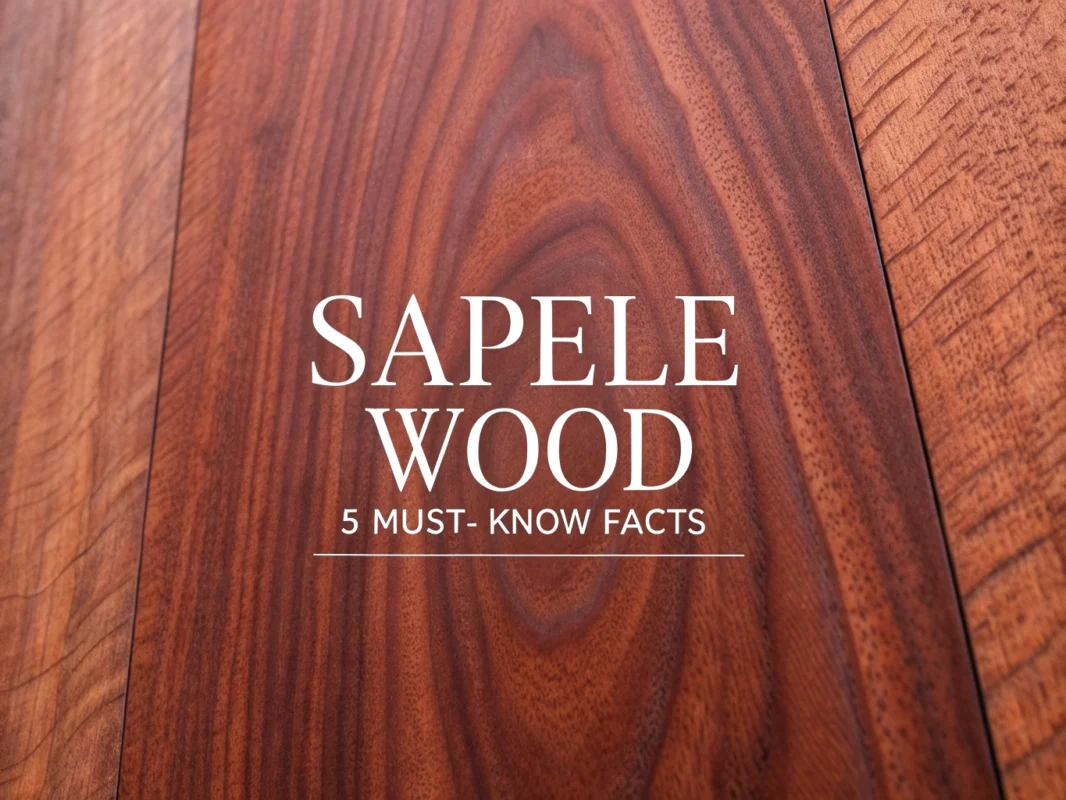
Quarter Sawn Oak: 5 Reasons to Choose It

Ever thought about why some furniture pieces last longer with their beauty intact? Let me introduce you to quarter sawn oak. This fascinating wood holds the secrets to durability and stunning visuals. Let’s explore why this special type of oak could be your next perfect pick.
Table of Contents
Quarter sawn oak represents a premium lumber cutting method that produces boards with superior dimensional stability and distinctive grain patterns compared to traditional plain sawn lumber. This specialized sawing technique, which orients growth rings at 60-90 degrees to the board face, creates the highly sought-after medullary ray “fleck” in white oak while delivering exceptional performance for flooring, cabinetry, and fine furniture applications.
Superior Dimensional Stability and Durability
Reduced Movement and Warping
Quarter sawn oak offers exceptional dimensional stability that sets it apart from plain sawn alternatives. According to North Castle Hardware, quarter and rift-sawn oak shrinks and swells less overall than plain sawn lumber. The movement occurs primarily in thickness rather than width, which dramatically reduces cupping, twisting, checking, and splitting during the drying process.
This stability makes quarter sawn oak particularly valuable for wide panels and flooring applications. The reduced tendency to cup means your investment maintains its flat, true surface over time, even in varying humidity conditions.
Enhanced Wear Performance
Quarter sawn oak boards wear more evenly than their plain sawn counterparts. This characteristic makes them ideal for high-traffic flooring and frequently used furniture pieces. The consistent wear pattern helps maintain the wood’s appearance and structural integrity over decades of use.
Distinctive Grain Patterns and Ray Fleck Aesthetics
Quarter Sawn White Oak’s Signature Look
Quarter sawn white oak showcases medullary rays that create a distinctive ribbon-like “flecking” figure highly prized in Arts & Crafts and Mission style furniture. These rays run across the grain and can be dramatically highlighted with lighter stains, creating visual depth and character that’s impossible to achieve with plain sawn lumber.
The ray fleck pattern varies from board to board, giving each piece unique character. This natural variation makes quarter sawn white oak a favorite among craftsmen who want to showcase the wood’s inherent beauty in their projects.
Rift Cut White Oak Alternative
Rift cut white oak offers a different aesthetic approach with straight, tight vertical grain and minimal fleck. According to Showplace Cabinetry, rift sawn boards show fleck primarily aligned with the grain up to 30 degrees, creating a clean, linear appearance perfect for modern aesthetics.
This makes rift cut white oak an excellent choice for contemporary kitchen cabinets and minimalist furniture designs where consistency and uniformity take precedence over dramatic grain patterns.
Better Moisture Resistance Properties
Natural Liquid Resistance
Quarter and rift-sawn white oak demonstrates superior liquid resistance compared to plain sawn alternatives. The wood’s structure slows liquid penetration, a property that has been leveraged historically in white oak barrels for wine and whiskey production. This natural resistance stems from the orientation of the wood fibers and the way they’re exposed on the board’s surface.
Ideal Applications
- Superior choice for flooring in moisture-prone areas
- Excellent for cabinetry, doors, and musical instruments
- Long-term stability in varying humidity conditions
These applications benefit from the wood’s ability to maintain dimensional stability while resisting moisture penetration that could lead to warping or damage.
Versatile Finishing and Design Options
Staining Considerations
Quarter sawn white oak responds differently to stains than other cuts. Cabinet Joint notes that lighter stains on quarter sawn white oak accentuate the ray fleck, while rift cut takes stain more consistently for a uniform appearance. Dark stains can appear uneven on quarter sawn boards due to variable absorption in the medullary rays.
For best results with quarter sawn boards, stick to light or neutral finishes that showcase the natural fleck pattern. Always test stains on offcuts before committing to your final finish.
Design Style Compatibility
Quarter sawn oak works perfectly for classic and timeless aesthetics, particularly in traditional and Arts & Crafts styles. Rift cut white oak suits modern minimalist designs where clean lines and consistency matter most. Natural oil finishes highlight the wood’s inherent character while providing protection.
Long-Term Value Investment
Premium Quality Justifies Cost
Quarter sawn oak commands a higher initial cost due to specialized sawing methods. The Baillie Group reports that rift and quartered patterns can create up to 50% more waste during milling, which increases scarcity and drives up pricing. This waste occurs because the specialized cutting angles don’t maximize yield from each log.
Maintaining Value Over Time
The superior longevity and performance of quarter sawn oak offset the premium pricing. Straighter surfaces and reduced movement preserve the wood’s appearance over decades. The classic look holds value in high-end millwork and furniture applications, making it a smart long-term investment.
Fewer sawmills produce quarter sawn lumber, maintaining its exclusivity and ensuring continued demand among discerning woodworkers and designers.
Understanding the Differences: Quarter Sawn vs. Rift Cut vs. Plain Sawn
Quarter Sawn Characteristics
Quarter sawn boards are cut at 60-90 degrees to the growth rings, according to Osborne Wood. This orientation produces strong ray fleck in white oak lumber and creates variable stain absorption due to the medullary rays. The result is boards with exceptional stability and distinctive visual character.
Rift Cut Features
Rift cut boards are sawn at 30-60 degrees to the growth rings. This produces straight vertical grain with minimal fleck, consistent staining properties, and a modern aesthetic that works well in contemporary designs. The grain pattern remains uniform across the board’s width.
Plain Sawn Comparison
Plain sawn lumber offers the highest yield and most economical option. It produces the familiar cathedral grain pattern but exhibits significant width movement and less stability than quarter or rift sawn alternatives. While less stable, plain sawn remains more readily available and budget-friendly.
Recommended Quarter Sawn Oak Products
These carefully selected quarter sawn oak products offer excellent options for various woodworking projects, from furniture making to cabinetry and repairs.

Premium Quarter Sawn White Oak Boards
- Durable and strong for woodworking projects
- Smooth finish for easy handling
- Attractive grain pattern enhances aesthetics
- Ideal for furniture making and cabinetry
- Two pieces provide great value and flexibility

Woodchucks White Oak Timber
- Premium-grade quarter sawn offers stability
- Versatile for various carpentry needs
- Eye-catching grain patterns
- Long-lasting durability
- Perfect for custom projects

Barrington Hardwood Oak Boards Set
- Quarter sawn for improved stability
- High-quality craftsmanship
- Offers a smooth, clean finish
- Great for smaller woodworking projects
- Comes in a set of four pieces

Quarter Sawn Oak – 24 Inch Piece
- Compact piece for specific projects
- Refined grain pattern
- Durable for lasting use
- Ideal for trim work and small repairs
- Easy to cut to size

24" Quarter Sawn Oak Board
- Solid choice for diverse projects
- Smooth finish ready for use
- Strong and durable wood type
- Consistent thickness and size
- Excellent for building and repair

Versatile White Oak Veneer Pack
- Covers 12 square feet efficiently
- Flaky grain adds character
- Ideal for cabinetry and paneling
- Easy application on various surfaces
- Enhances texture and depth

White Oak Veneer with Adhesive
- Easy peel and stick application
- Quarter sawn elegance
- Enhance furniture and decor
- Flexible for various surfaces
- Minimal effort for maximum impact
Working Tips and Best Practices
Selection Guidelines
When ordering lumber for flooring projects, specify “rift and quartered” to get a blend of straight grain boards with flecked boards based on your visual goals. Request “RSA/QS” when ordering white oak lumber from suppliers to ensure you receive the proper cut. Consider how much fleck versus straight grain you want in your finished project.
Finishing Recommendations
- Use lighter stains to showcase quarter sawn fleck
- Test stains on offcuts due to variable absorption
- Consider natural oil finishes for ribbed oak texture
- Expect straighter, less cupped boards during milling
These practices help you achieve the best possible results while working with this premium lumber. Remember that quarter sawn oak’s unique properties require different finishing approaches than standard lumber, but the results justify the extra attention to detail.
FAQs
What Are The Benefits Of Using Quarter Sawn Oak For Furniture?
Quarter sawn oak has several benefits, including its enhanced durability, unique and desirable grain pattern, and superior resistance to warping. This makes it an excellent choice for high-quality furniture that requires long-lasting performance and aesthetic appeal.
How Does Quarter Sawn Oak Differ From Plain Sawn Oak?
Quarter sawn oak differs from plain sawn oak in its cut and resulting grain pattern. Quarter sawing involves cutting the log into quarters before sawing, which produces a straighter grain and unique patterns like medullary rays. This makes quarter sawn oak more stable and visually interesting than plain sawn oak.
Is Quarter Sawn Oak More Expensive?
Yes, quarter sawn oak is generally more expensive than plain sawn oak due to the more labor-intensive sawing process and the increased waste produced. However, the additional cost is often justified by its superior stability and attractive grain patterns.
What Finish Is Best For Quarter Sawn Oak?
The best finish for quarter sawn oak depends on personal preference, but many people choose to use oil-based finishes to enhance the wood’s natural beauty and grain patterns. A clear polyurethane or lacquer finish can also provide a durable protective coating while showcasing the unique features of the wood.
How Can You Identify Quarter Sawn Oak Furniture?
Quarter sawn oak furniture can be identified by its distinct grain patterns, which often showcase flecks or medullary rays due to the unique cutting process. The grain will appear straighter and more consistent compared to plain sawn oak. Additionally, quality markings from reputable manufacturers or artisans may also indicate the use of quarter sawn oak.












